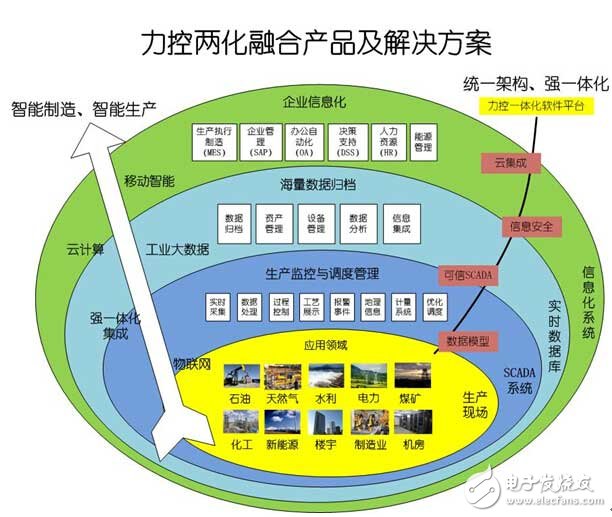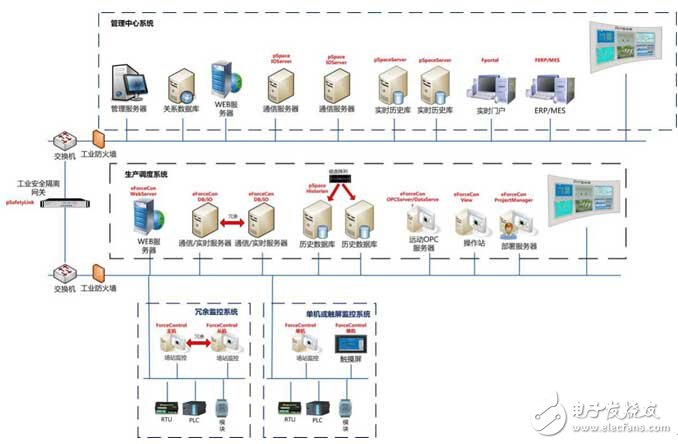1.1 Market Overview SCADA (Supervisory Control And Data AcquisiTIon) system, that is, data acquisition and monitoring control system. The SCADA system with remote data acquisition and monitoring as its main function is the same as DCS and PLC. It is an indispensable basic system for industrial process automation and informationization. The SCADA system was born in the 1970s, from dedicated computers and dedicated operating systems to general-purpose computers, distributed computer networks and database technologies, enabling a wide range of networking, and the SCADA system has evolved into the third generation. The SCADA system presented an open architecture. In the mid-1990s, SCADA manufacturers and solution providers increasingly chose open communication protocols such as IEC60870-5-101/104, IEC61850, and DNP3 serials. And DNP3 LAN/WAN, which allows users to more easily choose from a variety of vendors' products when developing systems to achieve optimized "mixed matching." By the late 1990s, various I/O manufacturers continued to move toward an open direction, preferring to adopt an open message structure like MODBUSRTU/ASCII. After 2000, with the widespread acceptance of Ethernet in industrial applications, most SCADA markets still accept Ethernet technology. The concept of “software is service†is also widely used in various fields of SCADA. Due to the evolution of the three generations of SCADA systems, industrial Internet technology has increasingly penetrated into the third generation of SCADA systems. We have clearly found that the rapid development of ICT communication systems has greatly affected the architecture of SCADA, not only in the past, but also in the future. The SCADA system has been extended to capture and monitor data from mobile processes, devices and processes to achieve SCADA that is always available and ubiquitous. The use of force control eForceCon SCADA system scheduling platform software V5.0 covers from the on-site monitoring station to the dispatching center, providing enterprises with complete production information collection and integration services from bottom to top, thus comprehensive automation, factory digitization and complete The “integrated management†solution provides a support platform. 1.2 SCADA applications and functions In practical applications, SCADA has a wider range of applications than DCS and PLC. Its application is generally divided into three categories: the first category is industrial processes, including processing, manufacturing, power generation, assembly and refining, petrochemical, etc.; according to the medium process of its processing is divided into continuous, batch and discrete. The second category is infrastructure, including waterworks and water supply networks, wastewater and sewer networks and wastewater treatment, oil/gas pipelines, transmission and supply, large-scale communication systems, and urban alarm systems. The third category is public facilities, including air conditioning monitoring, energy management and security monitoring for medium and large buildings, airports, terminals and subways. The SCADA system can be widely used in the deployment and construction of production dispatch centers, energy management and control centers, remote maintenance centers, and enterprise data centers in oilfields, natural gas, water conservancy, energy management, municipal, tobacco, and coal mining industries. After applying the SCADA system, the following social and economic benefits can be achieved: Greatly improve the safety performance and reliability of production and operation management; Automation of production recipe management can greatly improve product quality and production efficiency; Greatly reduce the possibility of production workers facing a harsh working environment, and ensure the safety of the first person in the work process; Can greatly reduce unnecessary manual waste; Through the centralized control and management of the production process, the competitiveness of the company as a whole is greatly improved; By retaining and processing equipment production trends, the system can improve the ability to predict emergencies, and rapid response and processing capabilities in emergencies can greatly reduce loss of life and property, thereby providing potential social and economic benefits. ; The force control eForceCon SCADA system dispatching platform software V5.0 can complete the monitoring and operation management of the system through the SCADA system in the dispatch control center and the regional control station, and each process station can realize unattended operation. The main functions are as follows Dispatch control center The main task of the dispatch control center is to collect and monitor the pipeline network through each station control system or RTU, and realize the tasks such as online simulation, operation plan, hazard source and positioning, operation optimization, measurement management and simulation training. The operator of the dispatch control center completes the operation and management of the entire system through the pressure, temperature, flow, density, and equipment operating status of the pipe network system process provided/displayed by the SCADA system operator workstation. Its main functions are as follows: Data acquisition and processing; dynamic display of process flow; alarm display, management and event query and printing; real-time data collection, archiving, management and trend graph display; historical data archiving, management and trend graph display; production statistics report Generate and print; user information management; release scheduling and operation commands; hazard source location; system accident handling, issue ESD commands; security protection; control authority determination; clock synchronization for the whole system; SCADA system diagnosis; Fault diagnosis and analysis; network monitoring and management; communication channel monitoring and management; switching of primary and secondary channels when data communication channel fails; providing data for information system; connecting with enterprise automation management system platform, exchanging data; and upper computer system Communication, etc. Backup control center In order to ensure that the system operation can be scheduled and managed in real time in the event of an unexpected event, the function of collecting, processing and storing real-time data is maintained. The role of the backup control center is that when the dispatch control center cannot monitor the system for any reason, the backup control center will take over control of the system. Switch between the primary and backup scheduling control centers Under normal circumstances, each process station exchanges information with the main dispatch control center. The dispatch control center and the backup control center transmit data in real time through the DDN private line (primary channel) and wireless communication (alternate channel) of the public network to ensure data synchronization. The backup control center monitors and tracks the running status of the dispatch control center at any time. Once the dispatch control center is found to be abnormal, the backup control center of the gate station automatically or manually starts to take over the monitoring right. In addition, the dispatch control center may also make a request to the communication network management center to switch the communication between the process stations SCS and the RTU to the backup control center. After the dispatch control center returns to normal, it first completes the data synchronization with the backup control center, and then resumes the monitoring of the pipe network.
Lithium Battery Cells , Lithium Ion Battery 12V ,Lithium Polymer Battery 3.7V, Lithium Ion Battery 12V,China 18650 Battery ,18650 Li Ion Battery Pack supplier & manufacturer, offer low price, high quality 10000Mah 18650 Battery Pack,18650 Lithium Battery Pack, etc.
The 18650 battery pack is one of the most popular lithium-ion battery packsavailable today.
Powered by the 18650 battery, it is very reliable and boasts an excellent cost per kilowatt hour. The 18650 battery pack is commonplace for consumer electronics, electric vehicles, and energy storage systems. It can be found in medical devices, robots, industrial instruments, military equipment, and more.
18650 Battery Packs 18650 Battery,18650 Li Ion Battery Pack,10000Mah 18650 Battery Pack,18650 Lithium Battery Pack Shenzhen Glida Electronics Co., Ltd. , https://www.szglida.com
